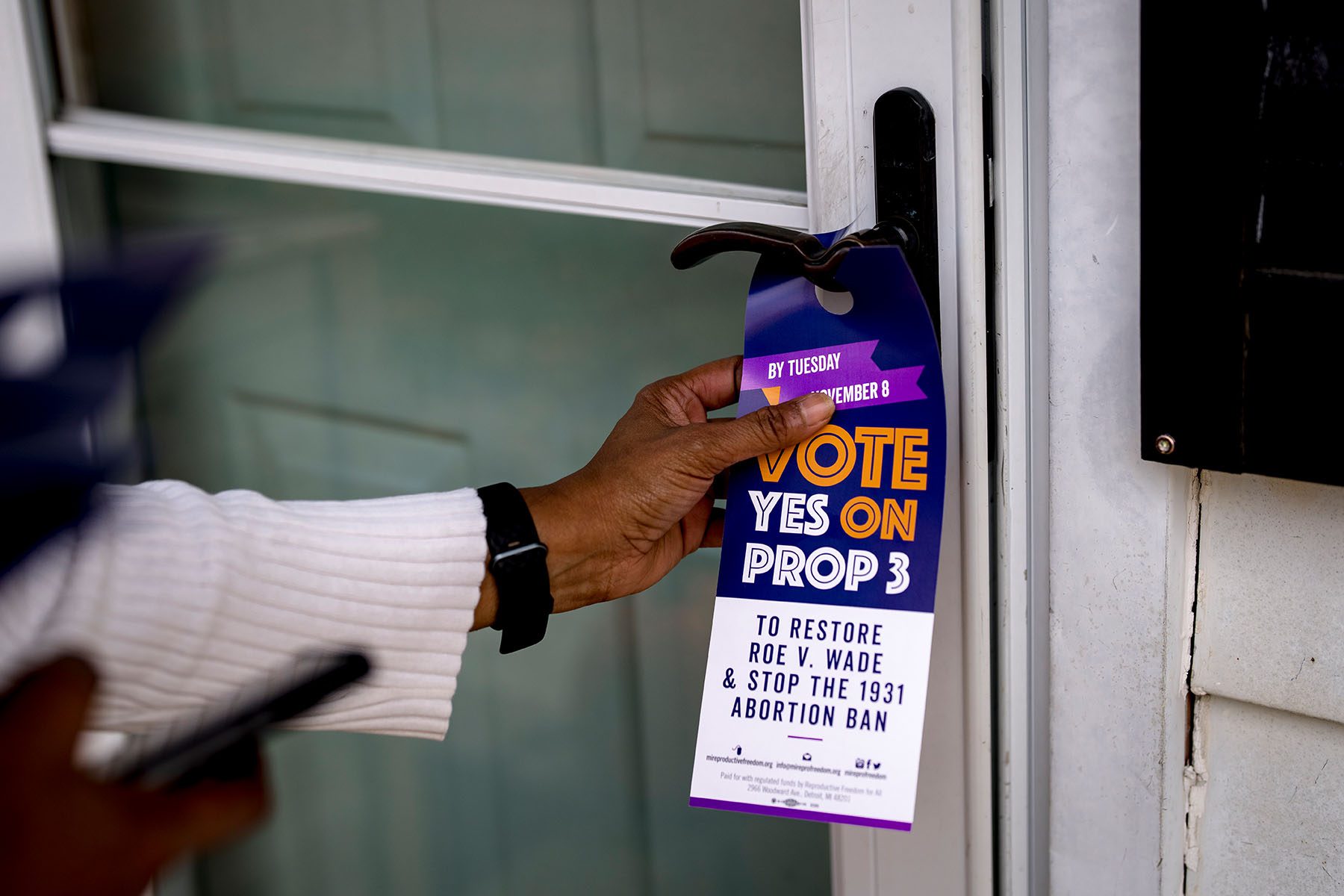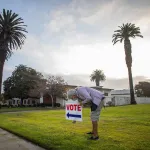We’re making sense of the midterms. Subscribe to our daily newsletter for election context and analysis.
Ballot measures expanding abortion access and reproductive rights outperformed Democratic candidates in the three states they were put to voters in the 2022 midterms, while anti-abortion ballot measures lagged Republican politicians in two states, a 19th News analysis found.
The results across the country affirm the broad unpopularity of the Supreme Court’s decision overturning Roe v. Wade in June and the unpopularity of strict abortion bans that many Republican-controlled states passed immediately afterward.
Only 10 percent of Americans nationwide and 13 percent of those living in states that have passed total abortion bans support making abortion illegal, an analysis of 19th News and SurveyMonkey polling data found. The poll, conducted in August, found that 61 percent of Americans nationwide and 52 percent of those living in the states that have enacted full abortion bans support abortion being legal in all or most cases.
In three states, voters approved ballot measures that enshrine an affirmative right to abortion and reproductive health care in their state constitutions. These votes cemented those states’ statuses as abortion havens, where the procedure will remain accessible and constitutionally protected. Abortion is legal with no restrictions in Vermont and up until the point of fetal viability in California and Michigan.
- California: Voters approved Proposition 1 by 66 percent to 34 percent, according to vote counting completed as of Tuesday. Yes on Prop 1 outran Sen. Alex Padilla, who won reelection 60 percent to 34 percent, and Gov. Gavin Newsom, who won reelection by 58 percent to 42 percent. The “yes” vote on the measure also outperformed the Democratic nominees for lieutenant governor, attorney general and secretary of state.
- Michigan: Proposal 3 won by 14 points, 57 percent to 43 percent. Yes on the measure outperformed Democratic Gov. Gretchen Whitmer, who won reelection 54 percent to 44 percent, Secretary of State Jocelyn Benson, who won reelection 56 percent to 42 percent, and Attorney General Dana Nessel, who won 53 to 45 percent.
- Vermont: Voters overwhelmingly passed Proposition 5 by over 50 points, 77 percent to 23 percent. Yes on Prop 5 outperformed Democratic U.S. Senate nominee Peter Welch, who was elected by 69 percent to 28 percent of the vote, and U.S. House nominee Becca Balint, who was elected to the state’s at-large House seat by a vote of 63 percent to 28 percent.
Voters in two states also rejected anti-abortion ballot measures that would have made the procedure more difficult to access, following the resounding defeat of an anti-abortion measure in Kansas in August. More people voted for winning Republican politicians in these states than for the anti-abortion ballot measures, and more people voted “no” on the measures than for Democrats on the ballot.
- Kentucky: Voters in the state voted down Amendment 2, which would have established no right to abortion in the state constitution if passed, by just four points, 52 percent to 48 percent. GOP Sen. Rand Paul outran the yes vote on the measure by 13 points, winning reelection against Democrat Charles Booker 61 percent to 39 percent. The amendment’s failure opens up an easier legal path to challenge the state’s total abortion ban.
- Montana: Voters also rejected Legislative Referred Statute 131, which would have required specific medical care standards for infants “born alive” by four points, 52 percent to 48 percent statewide. GOP House nominee Ryan Zinke won election to the state’s newly-drawn 1st District 50 percent to 46 percent over his Democratic opponent, and GOP Rep. Matt Rosendale won reelection to the 2nd District with 57 percent of the vote.
Rachel Sweet, campaign manager for Protect Kentucky Access, which opposed Amendment 2, told the Associated Press the failure of the measure was “an important step in continuing the legal fight for abortion access in this state.”
“Moreover, it is a repudiation of the extreme anti-choice agenda that is out of step with most voters’ values and beliefs,” she said.
Chris Melody Fields Figueredo, executive director of the Ballot Initiative Strategy Center (BISC), an organization that researches and advocates for the passage of progressive ballot measures, said the outcome of the six ballot measures sent “a clear message” that the Supreme Court decision ending Roe v. Wade was “out of touch” — and securing reproductive freedoms is “the path forward” for states.
She pointed to Montana as an overlooked and instructive victory for abortion rights supporters.
Unlike the failed initiatives in Kansas and Kentucky, Montana’s measure didn’t go as far as removing abortion rights from the state constitution. Opponents, however, said that the proposal, which mandated certain medical care for infants “born alive” in a cesarean section, induced labor or attempted abortion, was a solution in search of a problem.
Abortions later in pregnancy are exceptionally rare, as are attempted abortions resulting in an infant being “born alive.” They also argued it would further stigmatize life-saving medical care for health emergencies later in pregnancy and expose medical providers to criminalization.
“A lot of folks expected it to pass. The polling was against the beating of this measure at every step of the way,” Figueredo said. She added that reproductive rights advocates in the state “refused to let it go unanswered,” saying, “Montana is a demonstration of what is possible in a traditionally purple state that went to a Republican trifecta in 2020.”
Figueredo added that the BISC is already in communication with both lawmakers and advocates in numerous states about putting future reproductive rights initiatives on the ballot and beating back efforts to restrict abortion access in GOP-controlled statehouses.
“The reality is that everything’s on the table,” she said. “We absolutely have to go into state legislatures early in 2023 and protect reproductive rights and freedoms. And we know that there is opportunity, as we prepare for 2024, to take this issue to the ballot.”
Explore more stories about the midterms and their impact
Correction: This story has been updated to more accurately characterize the advocacy against Montana's ballot measure.






